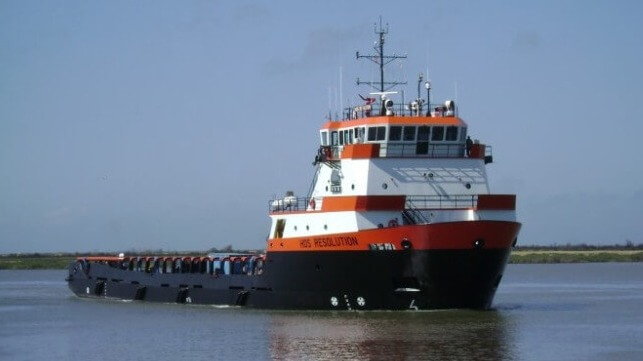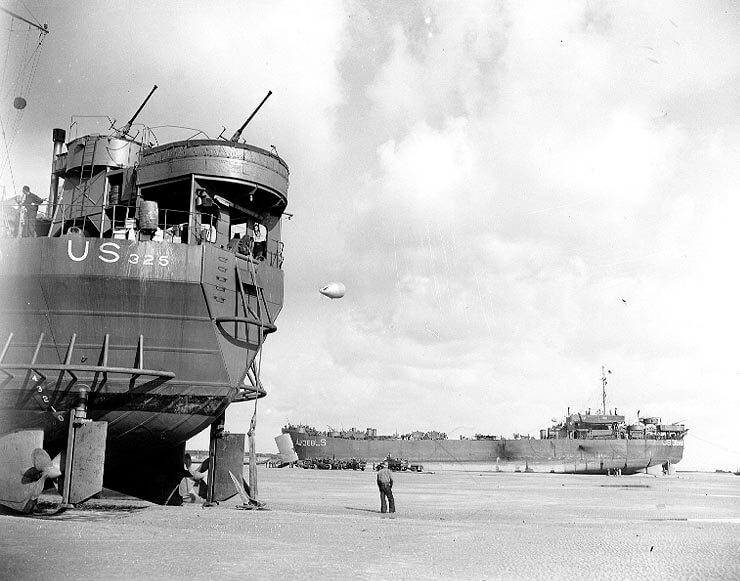U.S. Marine Corps Converts OSV Into a Stern Landing Craft Testbed

The U.S. Marine Corps is about to get its hands on a vessel testbed for a stern-ramp landing craft. Trials with the new design will inform the service's plans for its future shore-to-shore connector, the Landing Ship Medium.
Last year, Military Sealift Command contracted with Hornbeck to transform the commercial OSV HOS Resolution into a "Stern Landing Vessel" for USMC conceptual testing. HOS Resolution began life as a 2,750 dwt DP2 OSV with twin CPPs and a 12-foot draft. To make her into a testbed for a stern landing craft, a shipyard in Louisiana is adding a large articulated loading ramp, plus skegs, hull reinforcements, and jackup leg stabilizers, according to USNI.

U.S. Marine Corps Warfighting Laboratory
The HOS Resolution is nearly done with shipyard conversion and should begin evaluation by the Marine Corps Warfighting Lab and Military Sealift Command soon, according to Defense One. After that, it will head for San Diego in the spring for a series of experiments and tests.
As a testbed, HOS Resolution is a bit smaller than the Marine Corps' vision for its proposed Landing Ship Medium (LSM), which will carry 75 Marines and their gear. However, the OSV-based scale model will give the service an early taste of what it can accomplish with the design; HOS Revolution may well be the largest beach landing vessel ever built with a stern-facing ramp, and perhaps the sole example with jackup legs.
The project appears to be behind schedule: last year, Navy Times reported that the testbed vessel would deliver in summer 2022 and would go to the operational 3rd Marine Littoral Regiment for trials. It will now deliver in spring 2023 and will go to the experimental Marine Corps Warfighting Lab.
The LSM is key to the USMC's strategy to disperse small combat groups of Marines on far-flung islands in the Pacific, where they could target enemy warships and aircraft. However, the program has been a source of friction between the Navy and Marine Corps. The Navy would like to build a small number of well-armed, high-spec LAWs; the USMC has insisted on a requirement of 35 lightly-armed, inexpensive LAWs. This month, the USMC dropped its demand for 35 hulls and downgraded its formal requirement to nine.
A stern ramp beach landing craft is a rare vessel class, and known examples appear to be less than 500 dwt in size. The Marine Corps has other technical options. A competing proposal from Austal USA would use a bow door and forward ramp arrangement, much like the Landing Ship Tank (LST) of WWII. The Navy solicited about one dozen preliminary designs for the LSM, and after downselecting last year, there are a total of five concept design contracts running. Both bow and stern ramp arrangements are allowable under the requirement.

LSTs fully aground at Normandy at low tide, showing bow landing ramp (center left) and heavily-protected propellers (far left) (USN)
